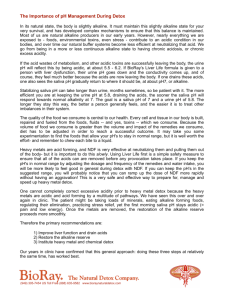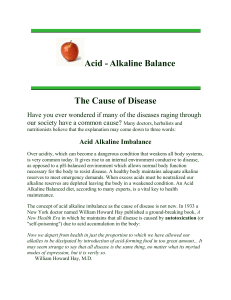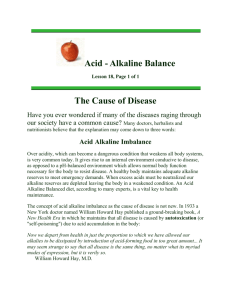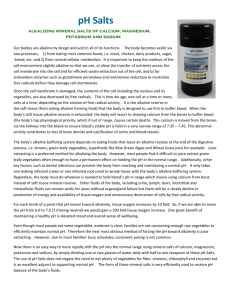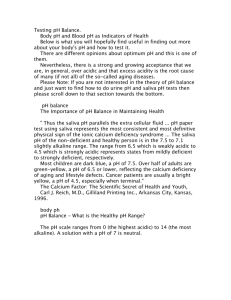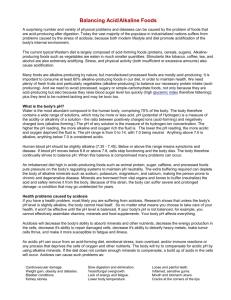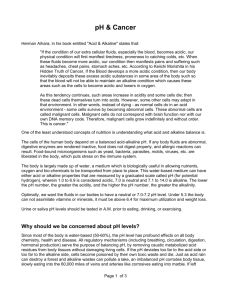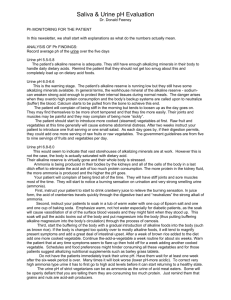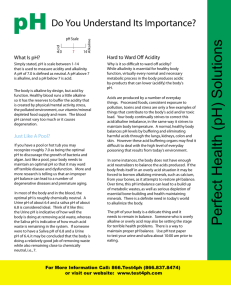Alkaline Foods
advertisement
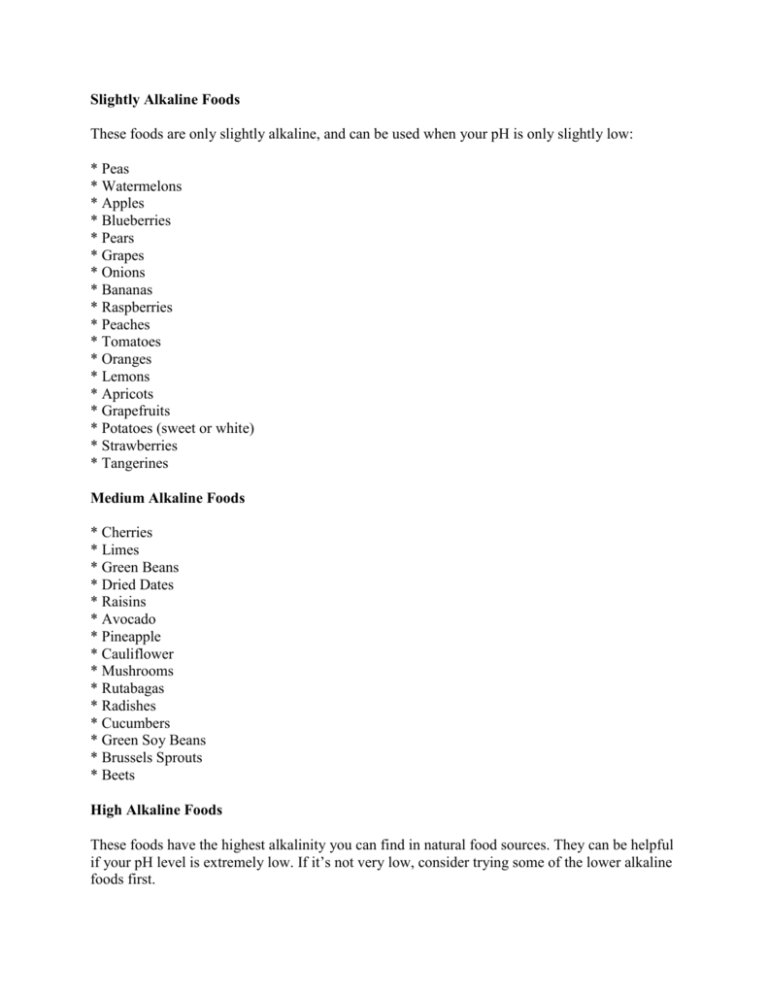
Slightly Alkaline Foods These foods are only slightly alkaline, and can be used when your pH is only slightly low: * Peas * Watermelons * Apples * Blueberries * Pears * Grapes * Onions * Bananas * Raspberries * Peaches * Tomatoes * Oranges * Lemons * Apricots * Grapefruits * Potatoes (sweet or white) * Strawberries * Tangerines Medium Alkaline Foods * Cherries * Limes * Green Beans * Dried Dates * Raisins * Avocado * Pineapple * Cauliflower * Mushrooms * Rutabagas * Radishes * Cucumbers * Green Soy Beans * Brussels Sprouts * Beets High Alkaline Foods These foods have the highest alkalinity you can find in natural food sources. They can be helpful if your pH level is extremely low. If it’s not very low, consider trying some of the lower alkaline foods first. * Broccoli * Cabbage * Rhubarb * Lima Beans * Lettuce * Sauerkraut * Watercress * Chard * Dried Beans * Carrots * Dried Figs * Celery * Molasses * Beet Greens * Raw Spinach Understanding pH pH (potential of hydrogen) is a measure of the acidity or alkalinity of a solution. It is measured on a scale of 0 to 14—the lower the pH the more acidic the solution, the higher the pH the more alkaline (or base) the solution. When a solution is neither acid nor alkaline it has a pH of 7 which is neutral. Water is the most abundant compound in the human body, comprising 70% of the body. The body has an acid-alkaline (or acid-base) ratio called the pH which is a balance between positively charges ions (acid-forming) and negatively charged ions (alkaline-forming.) The body continually strives to balance pH. When this balance is compromised many problems can occur. It is important to understand that we are not talking about stomach acid or the pH of the stomach. We are talking about the pH of the body's fluids and tissues which is an entirely different matter. Test Your Body's Acidity or Alkalinity with pH Strips: It is recommended that you test your pH levels to determine if your body's pH needs immediate attention. By using pH test strips, you can determine your pH factor quickly and easily in the privacy of your own home. If your urinary pH fluctuates between 6.0 to 6.5 in the morning and between 6.5 and 7.0 in the evening, your body is functioning within a healthy range. If your saliva stays between 6.5 and 7.5 all day, your body is functioning within a healthy range. The best time to test your pH is about one hour before a meal and two hours after a meal. Test your pH two days a week. Click here to order pH Test Strips Most people who suffer from unbalanced pH are acidic. This condition forces the body to borrow minerals—including calcium, sodium, potassium and magnesium—from vital organs and bones to buffer (neutralize) the acid and safely remove it from the body. Because of this strain, the body can suffer severe and prolonged damage due to high acidity—a condition that may go undetected for years. Mild acidosis can cause such problems as: Cardiovascular damage, including the constriction of blood vessels and the reduction of oxygen. Weight gain, obesity and diabetes. Bladder and kidney conditions, including kidney stones. Immune deficiency. Acceleration of free radical damage, possibly contributing to cancerous mutations. Hormone concerns. Premature aging. Osteoporosis; weak, brittle bones, hip fractures and bone spurs. Joint pain, aching muscles and lactic acid buildup. Low energy and chronic fatigue. pH and Bone Loss: A recent seven-year study conducted at the University of California, San Francisco, on 9,000 women showed that those who have chronic acidosis are at greater risk for bone loss than those who have normal pH levels. The scientists who carried out this experiment believe that many of the hip fractures prevalent among middle-aged women are connected to high acidity caused by a diet rich in animal foods and low in vegetables. This is because the body borrows calcium from the bones in order to balance pH. — American Journal of Clinical Nutrition Slow digestion and elimination. Yeast/fungal overgrowth. Urine pH Urine testing may indicate how well your body is excreting acids and assimilating minerals, especially calcium, magnesium, sodium and potassium. These minerals function as "buffers." Buffers are substances that help maintain and balance the body against the introduction of too much acidity or too much alkalinity. Even with the proper amounts of buffers, acid or alkaline levels can become extreme. When the body ingests or produces too many of these acids or alkalis, it must excrete the excess. The urine is the perfect way for the body to remove any excess acids or alkaline substances that cannot be buffered. If the average urine pH is below 6.5 the body's buffering system is overwhelmed, a state of "autotoxication" exists, and attention should be given to lowering acid levels. Saliva pH The results of saliva testing may indicate the activity of digestive enzymes in the body. These enzymes are primarily manufactured by the stomach, liver and pancreas. While the saliva also utilizes buffers just like the urine, it relies on this process to a much lesser degree. If the saliva pH is too low (below 6.5), the body may be producing too many acids or may be overwhelmed by acids because it has lost the ability to adequately remove them through the urine. If the saliva pH is too high (over 6.8), the body may suffer greatly, e.g. excess gas, constipation and production of yeast, mold and fungus. Some people will have acidic pH readings from both urine and saliva—this is referred to as "double acid." Restoring pH Balance in the Body Your body is able to assimilate minerals and nutrients properly only when its pH is balanced. It is therefore possible for you to be taking healthy nutrients and yet be unable to absorb or use them. If you are not getting the results you expected from your nutritional or herbal program, look for an acid alkaline imbalance. Even the right herbal program may not work if your body's pH is out of balance. Change Your pH Balance from Acidic to Alkaline By far the most common imbalance seen in our society is over acidity. If your urine and/or saliva test below 6.5 pH start with steps 1 through 5 below and continue adding steps until desired results are achieved. Be sure to monitor your progress with easy-touse pH test strips: pH Balance Supplements for Overly-Acidic 1. 2. 3. 4. 5. Enzymes are essential: Take 1-2 capsules of either Food Enzymes or Proactazyme Plus with every meal. For even better and quicker results, also take 1-2 capsules of High Potency Protease and Nature's Noni between meals on an empty stomach. Easily absorbable magnesium is needed: Take 2 Magnesium Complex with each meal which provides highly absorbable magnesium to help build necessary buffers. Magnesium is often lost in urine as a consequence of too much acid in the body. Alkaline minerals are essential: Take 1 ounce of either Ionic Minerals or Mineral Chi Tonic once daily. Alkalize with Green Food: Take 1 teaspoon of Liquid Chlorophyll in water up to eight times daily. Absorbable Calcium: If your urine is 5.8-7.2, take Calcium Plus Vitamin D and Magnesium (the amino acid chelated form, not the carbonate form) daily to support your bones. If pH is 5.0-6.5, use Sea Calcium (pH 10.)
